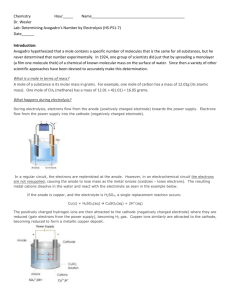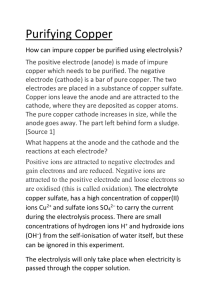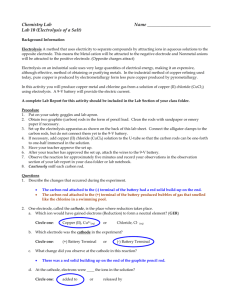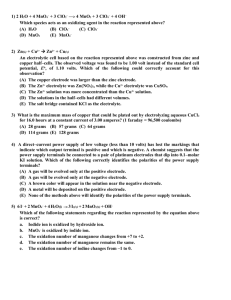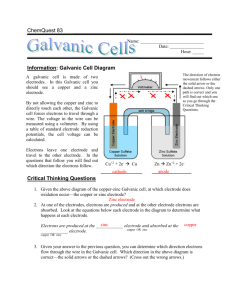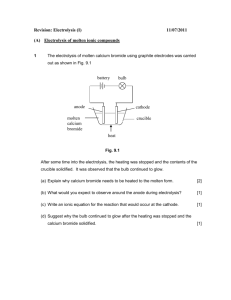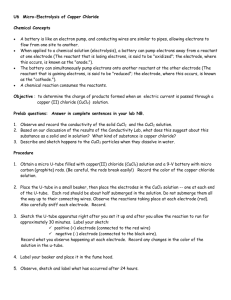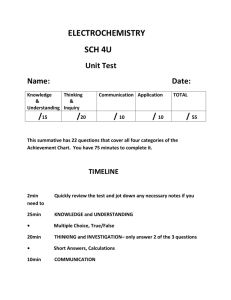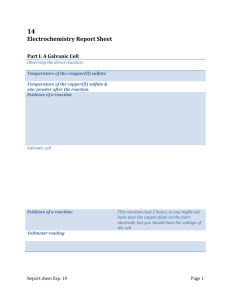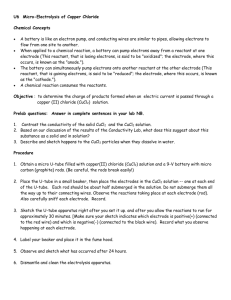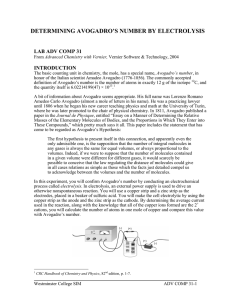Introduction
advertisement
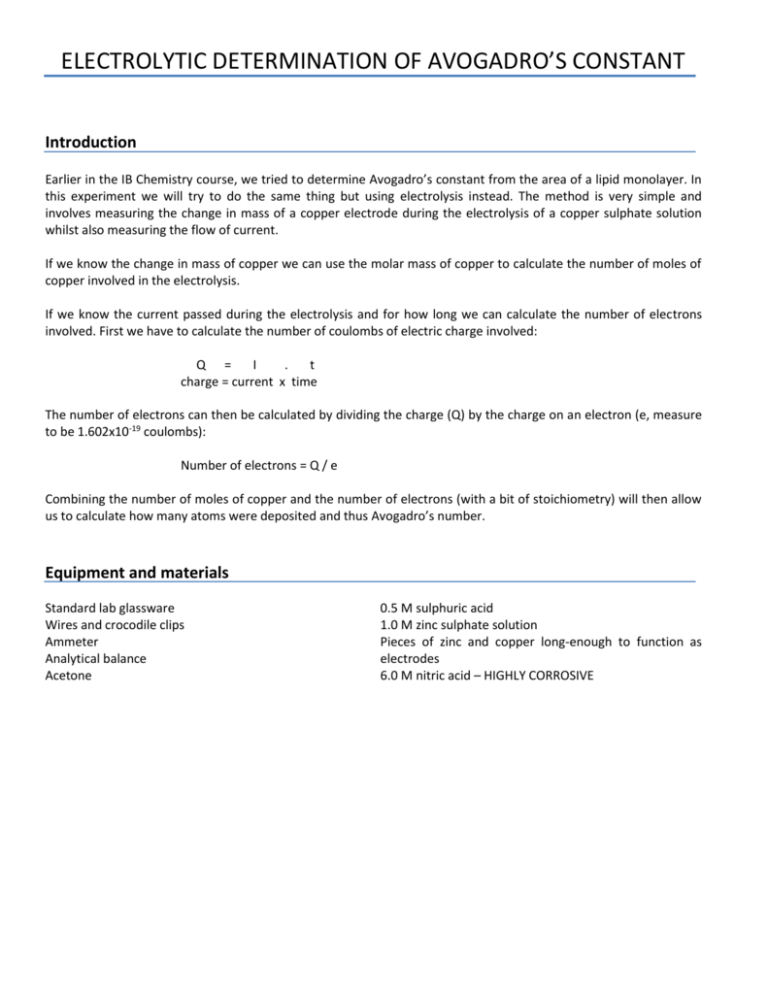
ELECTROLYTIC DETERMINATION OF AVOGADRO’S CONSTANT Introduction Earlier in the IB Chemistry course, we tried to determine Avogadro’s constant from the area of a lipid monolayer. In this experiment we will try to do the same thing but using electrolysis instead. The method is very simple and involves measuring the change in mass of a copper electrode during the electrolysis of a copper sulphate solution whilst also measuring the flow of current. If we know the change in mass of copper we can use the molar mass of copper to calculate the number of moles of copper involved in the electrolysis. If we know the current passed during the electrolysis and for how long we can calculate the number of electrons involved. First we have to calculate the number of coulombs of electric charge involved: Q = I . t charge = current x time The number of electrons can then be calculated by dividing the charge (Q) by the charge on an electron (e, measure to be 1.602x10-19 coulombs): Number of electrons = Q / e Combining the number of moles of copper and the number of electrons (with a bit of stoichiometry) will then allow us to calculate how many atoms were deposited and thus Avogadro’s number. Equipment and materials Standard lab glassware Wires and crocodile clips Ammeter Analytical balance Acetone 0.5 M sulphuric acid 1.0 M zinc sulphate solution Pieces of zinc and copper long-enough to function as electrodes 6.0 M nitric acid – HIGHLY CORROSIVE Procedure 1. Clean the copper electrode to be used as the anode by briefly (2-3s) immersing it in 6 M HNO3. Do not touch the electrode with your fingers. 2. Rinse the electrode with distilled water and then acetone and leave on paper towel to dry. 3. Weigh the electrode to the nearest 0.0001 gram. 4. Place 200 cm3 of 0.5 M H2SO4 into a 250 cm3 beaker and place a copper and a zinc electrode in the beaker. 5. With the power supply turned off, connect the negative terminal of the power supply to the zinc (cathode) electrode and the positive terminal to the copper electrode (anode). The ammeter should be connected in series (not parallel!). 6. Simultaneously switch on the power supply and start the stopwatch. 7. Record the current initially and every minute subsequently. 8. Simultaneously stop the stopwatch and switch off the power supply at exactly 20 minutes, ensuring you note the final current. 9. Retrieve the anode from the cell, gently rinse in a beaker of distilled water, and dry using acetone as before. Do not wipe the anode as this will dislodge copper atoms. 10. Weigh the anode on an analytical balance. Analysis 1. 2. 3. 4. 5. 6. 7. 8. Calculate the mass change of the anode. Calculate the number of moles of copper lost. Calculate the average current. Calculate the number of electrons flowing through the circuit. Calculate the number of atoms of copper lost….adjust the electrons to take account of stoichiometry. Calculate Avogadro’s constant, L. Calculate the % error by comparing with the literature value of L. How does your value compare to the literature value of L? What do you think the main sources of error are and how could you overcome them?
